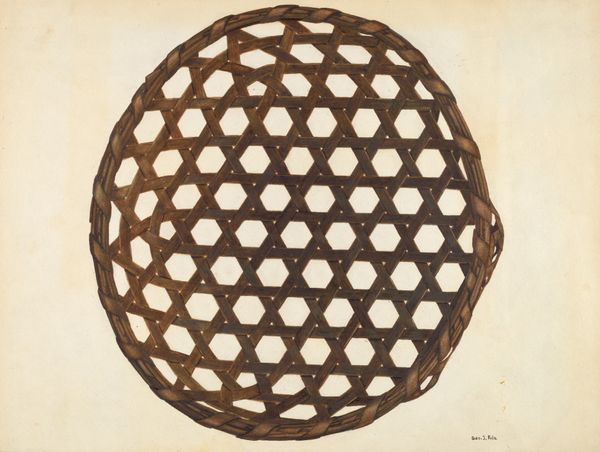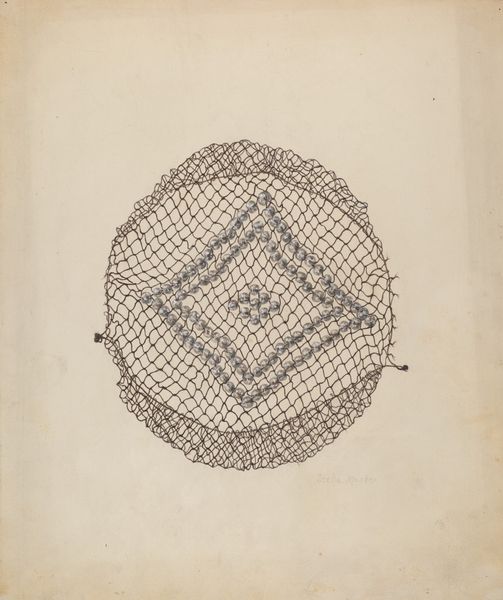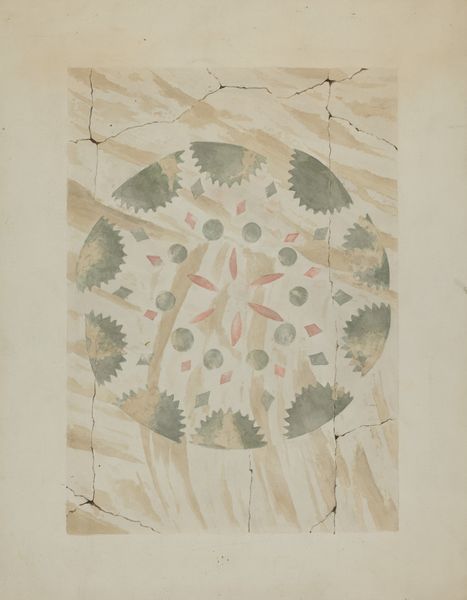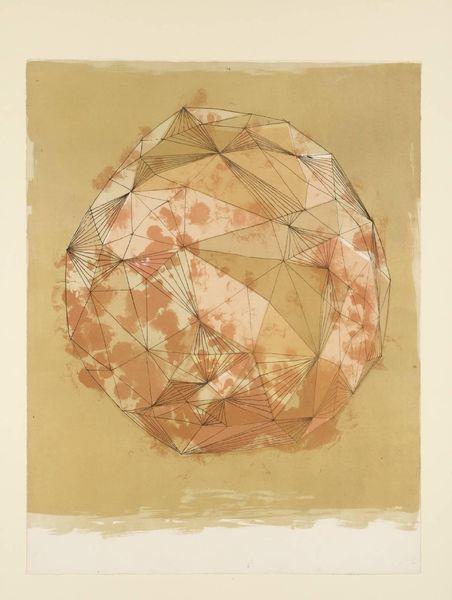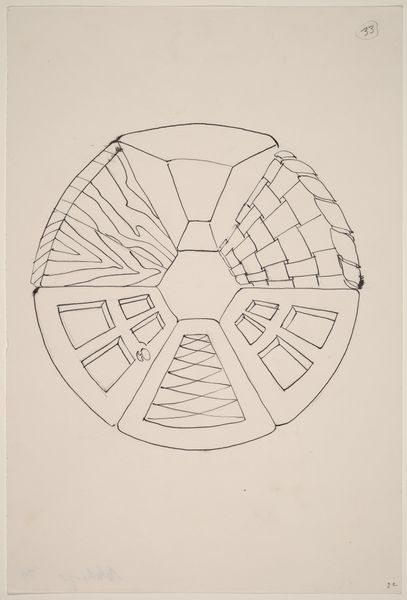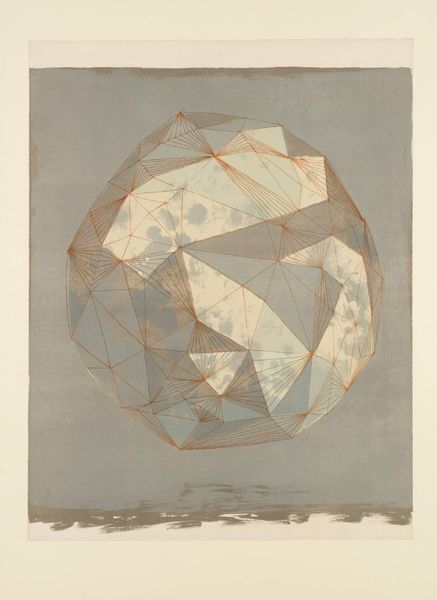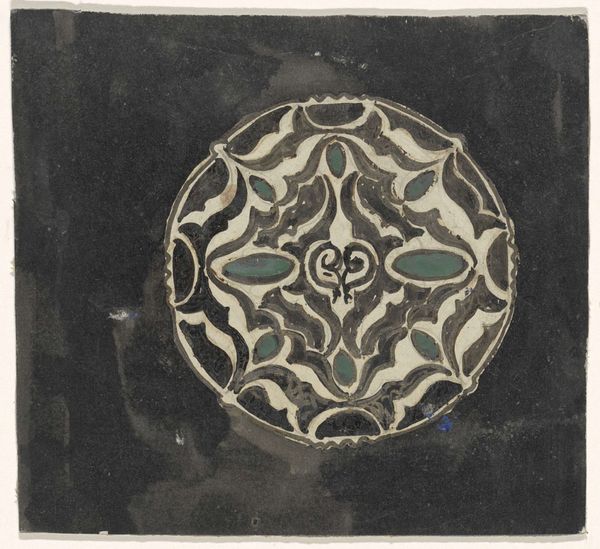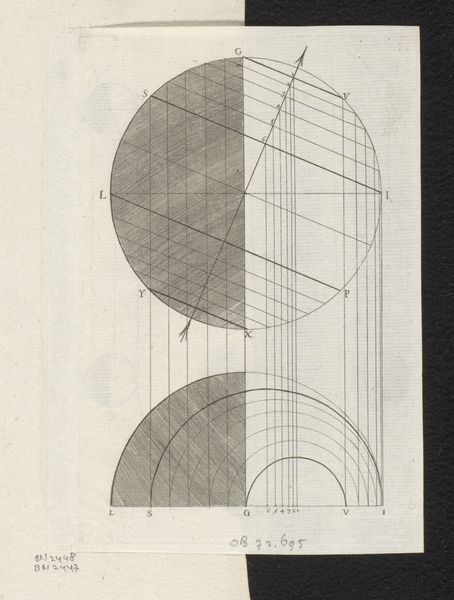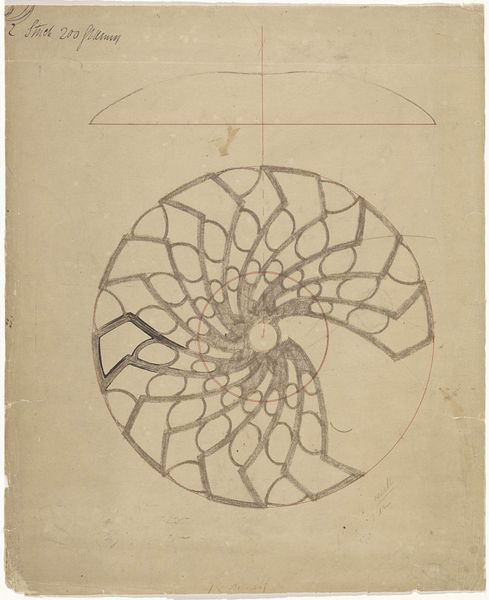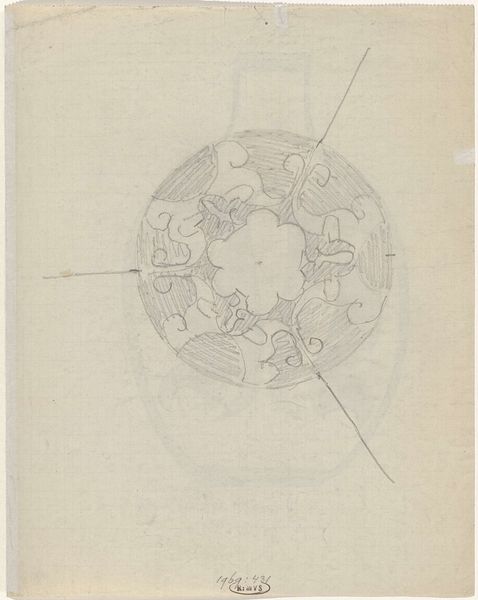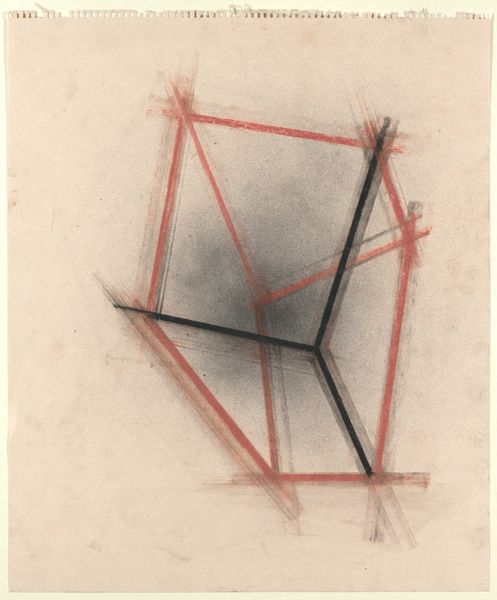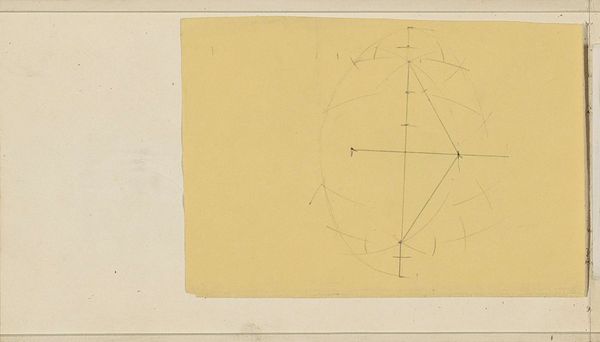
Copyright: Public Domain: Artvee
Editor: We're looking at "Flower Basket" by Kamisaka Sekka, made around 1909-1910. It’s a watercolor and the design is very striking - it almost looks like a cage holding the flowers. What jumps out at you? Curator: The interwoven lines of the basket itself immediately draw my eye, hinting at both enclosure and exposure. This contrast between what’s contained and what's visible resonates with enduring symbols across cultures - think of the garden as paradise, viewed through a constructed barrier. What does the cage signify to you in relation to nature, and its vulnerability? Editor: That's an interesting take. I guess I was seeing it more literally, just as a vessel. Curator: But vessels carry cultural weight too. Baskets, especially in East Asian art, are often humble objects elevated to represent cultivated beauty. How does this juxtaposition change the way you perceive its form, in terms of Ukiyo-e? Editor: It makes me think about how intentional every element must have been, beyond just representing something pretty. Is it also meant to reflect a fleeting moment of natural beauty in this fixed form, or something else? Curator: Precisely. This tension, this bittersweet dance between capturing ephemerality and accepting decay, is central to Sekka’s project and to our own relationship with images. In essence, they are memory aids but change over time. Do you find your understanding has changed? Editor: Definitely. I see more layers now, not just the aesthetic surface. Thanks for sharing those insights. Curator: My pleasure. Visual forms are like palimpsests – always overwritten with cultural memory. We continually reimagine them anew.
Comments
No comments
Be the first to comment and join the conversation on the ultimate creative platform.
